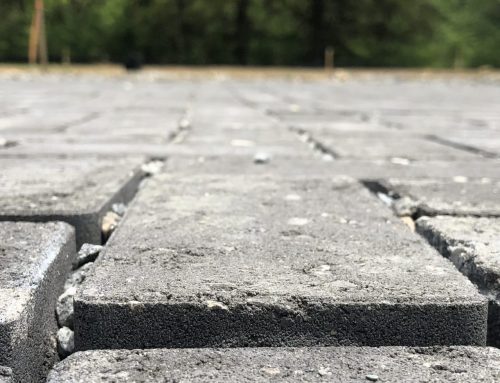The Center recently wrapped up work with two Maryland neighborhood associations to develop stormwater management plans for their communities. With each project, the work entailed conducting a field assessment of stormwater retrofit opportunities; prioritizing the resulting projects based on cost-effectiveness, impervious area treated, property ownership and community interest; and developing conceptual designs for the top-ranked retrofits. Both projects were funded by the Chesapeake Bay Trust.
Overlook Neighborhood
The Overlook neighborhood is a community of approximately 100 properties in Bethesda, Maryland. The Center worked with the Overlook Homeowners Association and the Little Falls Watershed Alliance to identify stormwater retrofit project opportunities as well as other stewardship actions that could be taken by homeowners.
Seven locations were determined to be suitable for retrofits. Approximately 46% of the neighborhood and 54% of the impervious area in the neighborhood would be treated by the identified retrofits.
The Center developed design concepts for all seven projects. Figure 1 shows the top-ranked site, which is located at the community pool. Here, the Center proposed constructing a rain garden next to the path that leads to the pool area. This location is a great demonstration area because it is highly visible, there are no tree conflicts, and the soil has a high infiltration rate, so no underdrain is needed. Overlook neighborhood will construct this retrofit with Chesapeake Bay Trust funding.
The Center also identified the following watershed stewardship actions that homeowners in the neighborhood could implement themselves:
- Rain barrels could be installed at downspouts so gardeners could water plants using soaker hoses or watering cans. Rain barrels help by slowing the release of stormwater into the surrounding area, thereby reducing the likelihood of erosion.
- Homeowners could conduct a soil test to determine the type and amount of fertilizer needed.
- Excess fertilizer can pollute the nearby waterways and the soil tests results could help reduce fertilizer usage in the neighborhood.
- Commercial pesticides and herbicides could be substituted with organic or natural alternatives
The Center is working with the client to apply for grant funding to design and construct at least two more of the top ranked retrofit projects.
Epping Forest Neighborhood
Epping Forest is a 115-acre waterfront community just outside of downtown Annapolis, located between Clements Creek and Saltworks Creek, within the watershed of the Severn River. The community is within the Critical Area in Anne Arundel County. During rain events, some avoidable issues occur as a result of stormwater overflows, including nuisance flooding, sedimentation, and polluted runoff.
The Center worked with Epping Forest, Inc. to identify stormwater retrofit project opportunities, identify solutions to localized drainage problems, and identify other actions the community can take to improve stormwater management. In particular, the community was searching for water quality improvements that could be made at the Epping Forest Clubhouse, as this is the main community area. Repaving the parking lot is being considered, making this a good opportunity to include stormwater and drainage management efforts. A total of ten retrofit sites were found during the community field assessment. Approximately 36% of the watershed and 30% of the impervious cover would be treated by these retrofits.
At the Clubhouse, the Center proposed three bioswales that will capture 14.8 acres of drainage (Figure 2). By combining these swale locations with a re-design of the Clubhouse parking lot surface, the water quality of the discharge will be greatly improved, and drainage problems in the parking lot will be addressed simultaneously. Given the site’s proximity to the Severn River, groundwater levels will likely be too high to allow installation of bioretention areas, permeable pavement, or other BMPs that rely on filtering and infiltration. Therefore, bioswales with a deep gravel layer, which will function like a gravel wetland, are recommended as the best option for providing water quality improvements.
The final retrofit report includes the prioritized list of recommended retrofits; concepts for the Clubhouse site; recommendation to address drainage problems that include re-design of a key inlet structure; and other small scale approaches that can be implemented across the community, as described below:
- Many existing stormwater management practices (inlet grates, culverts, ditches) were filled with debris and leaf litter. A community maintenance plan may be needed, especially if more practices will be added in the future. Public education and outreach may help decrease some of these issues.
- Small gravel swales can be added to yards to direct flow, but care must be taken to ensure that the flooding isn’t simply pushed to the neighbors.
- Where possible, downspouts should be diverted to pervious areas rather than paved roads to allow more stormwater to soak into the ground.
- If space is available, a ditch can be installed next to the road to help keep water near the road, rather than flowing onto private property.
The Center is working with the client to apply for grant funding to design and construct the Clubhouse retrofit.
For more information about this projects, contact Greg Hoffmann at gph@cwp.org.








